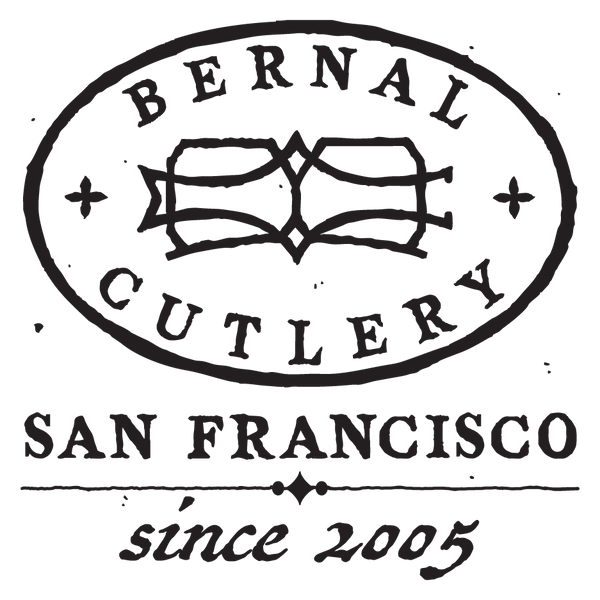-
Currency
-
NEW
- All New Products
- New Kitchen Knives
- New Kitchen Tools
- Latest Vintage
- New Pocket & Outdoor
- New Pantry
-
What's in my Basket Series
- Susan Kim - Eat Doshi
- Dr. Harold McGee - Author
- Ryo Sakai -Kuma Sushi
- Ian McNemar - Woodworker, Instructor
- Anna Voloshyna - Author
- Jorge Martinex Lillard - Lolo´
- Chris Yang - Piglet & Co
- Griffin Wilson - @cabincorn
- Gabe Rudolph - Gestura Utensils
- Marc Schechter - Square Pie Guys
- Molly DeCoudreaux - Food Photographer
- Geoff Davis - Burdell Soul Food
- Jen and Wes - @crazythickasians
- Josh Donald - Bernal Cutlery
- Kelly Kozak - Bernal Cutlery
- Jessica Sullivan - Poppy SF
- Sylvan Mishima Brackett - Rintaro
- Michael Myers - Film Character
- Ali Hooke - @alihooke
- Bruce Hill - The Chef's Press
- Dylan Carasco - Butcher's Guide
- Spencer Horowitz - Hadeem
-
Japanese Knives
- Ashi Hamono
- Gihei Knives
- Godo Tadaharu
- Hado
- Hatsukokoro
- Hitohira
- Iwasaki Kamisori
- Kaji-Bei
- Kamo Shiro
- Kanehide
- Konosuke
- MAC Knife
- Masakane
- Makoto Tadokoro Marushin
- Morihei
- Myojin Riki Sesakusho
- Nakagawa Hamono
- Naozumi
- Nigara Hamono
- Sakai Kikumori
- Shigefusa
- Tagai
- Takada no Hamono
- Tanabe Tatara
- Tosa
- Tsukasa Hinoura
- Yoshikane
- Yoshikazu Tanaka
- Wakui
-
Global Knives
- Allday Goods (GBR)
- Alma Knife Co. (USA)
- Astral Works (USA)
- Au Sabot (FRA)
- Benchmade Cutlery (USA)
- Bernal Cutlery (USA)
- Blenheim Forge (GBR)
- Chazeau Honoré (FRA)
- Dexter Russell (USA)
- Eichenlaub Tableware (DEU)
- Florentine Kitchen Knives (ESP)
- Fontenille Pataud (FRA)
- Friedr Herder (DEU)
- J Adams (GBR)
- John Nowill & Son (GBR)
- K Sabatier (FRA)
- Pallares (ESP)
- Rolin Knives (USA)
- Silverthorn (USA)
- Steelport Knife Co. (USA)
- Windmühlenmesser (DEU)
- Zirh (TUR)
-
Pocket | Outdoor
- A Wright & Son (GBR)
- Andersson & Copra (SWE)
- Au Sabot Folders (FRA)
- Benchmade (USA)
- Buck Knives (USA)
- David Margrita (FRA)
- Friedr Herder (DEU)
- Fontenille Pataud (FRA)
- Helle (NOR)
- Higonokami
- Hults Bruk Axes (SWE)
- Ibberson (GBR)
- Joseph Rogers & Sons (GBR)
- Kalthoff Axes (SWE)
- MOKI Knives (JPN)
- Morakniv (SWE)
- Opinel (FRA)
- Pallares (ESP)
- Tactile Knife Company (USA)
- Wood Tools (GBR)
- Vintage & New Vintage
-
Styles
- Bernal Cutlery Collaborations
- Knife Sets
- Carving Forks | Knives | Sets
- Japanese Kitchen Knives
- Western Kitchen Knives
- Chinese Style Cleavers
- Bread
- Butchery
- Cheese | Charcuterie
- Young Chefs
- Pocket | Folding
- Woodworking | Hobby | Craft
- Kamisori Razors
- Table | Steak
- Fixed Blades | Axes | Outdoor Tools
- Scissors | Shears | Snips
- Left Handed
- The Vault
- Vintage
- Sayas | Guards
- Sharpening
- Kitchen | Cookware
- Tableware | Service
- Pantry
- Accessories
- Deals
- Gift Cards
- INFO
or
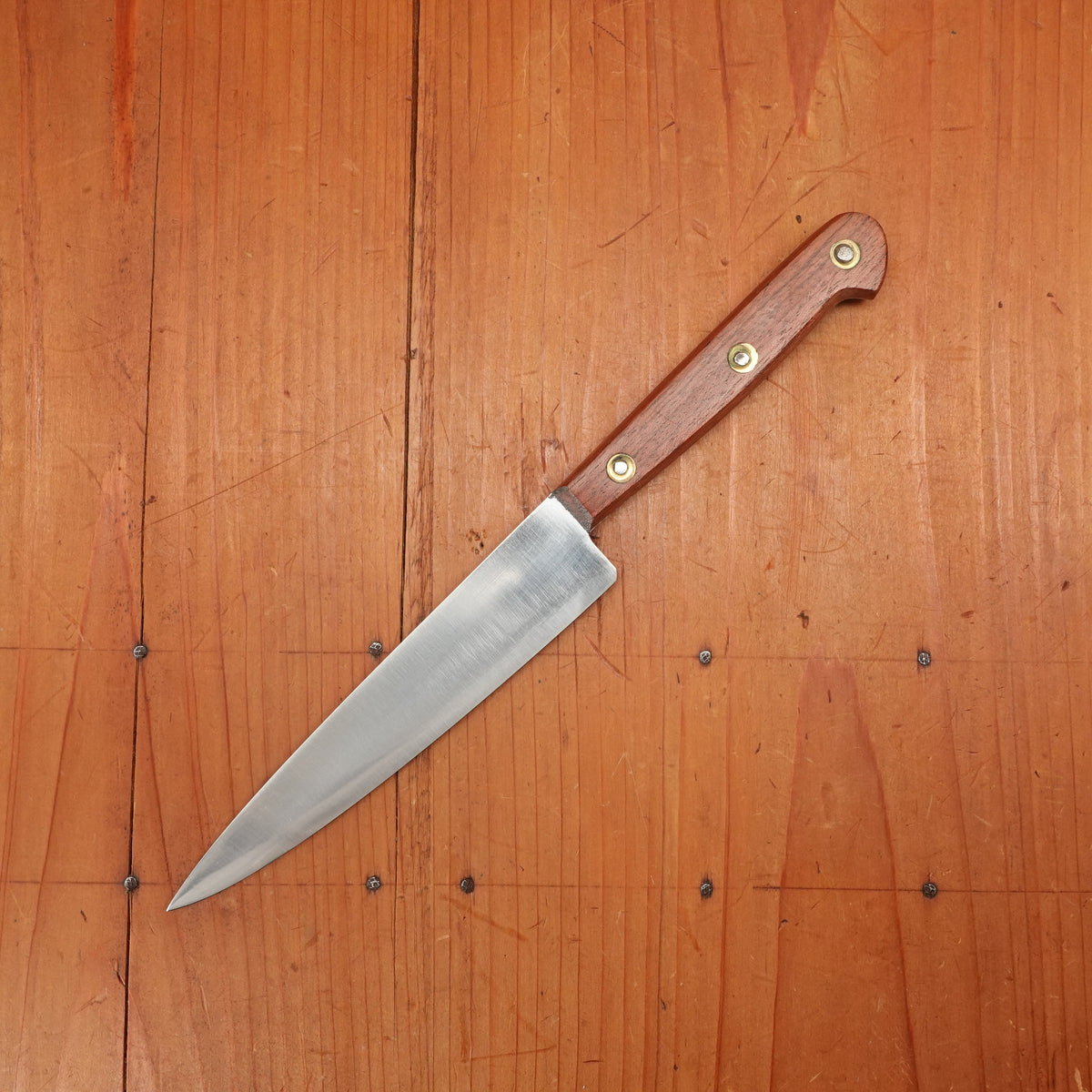
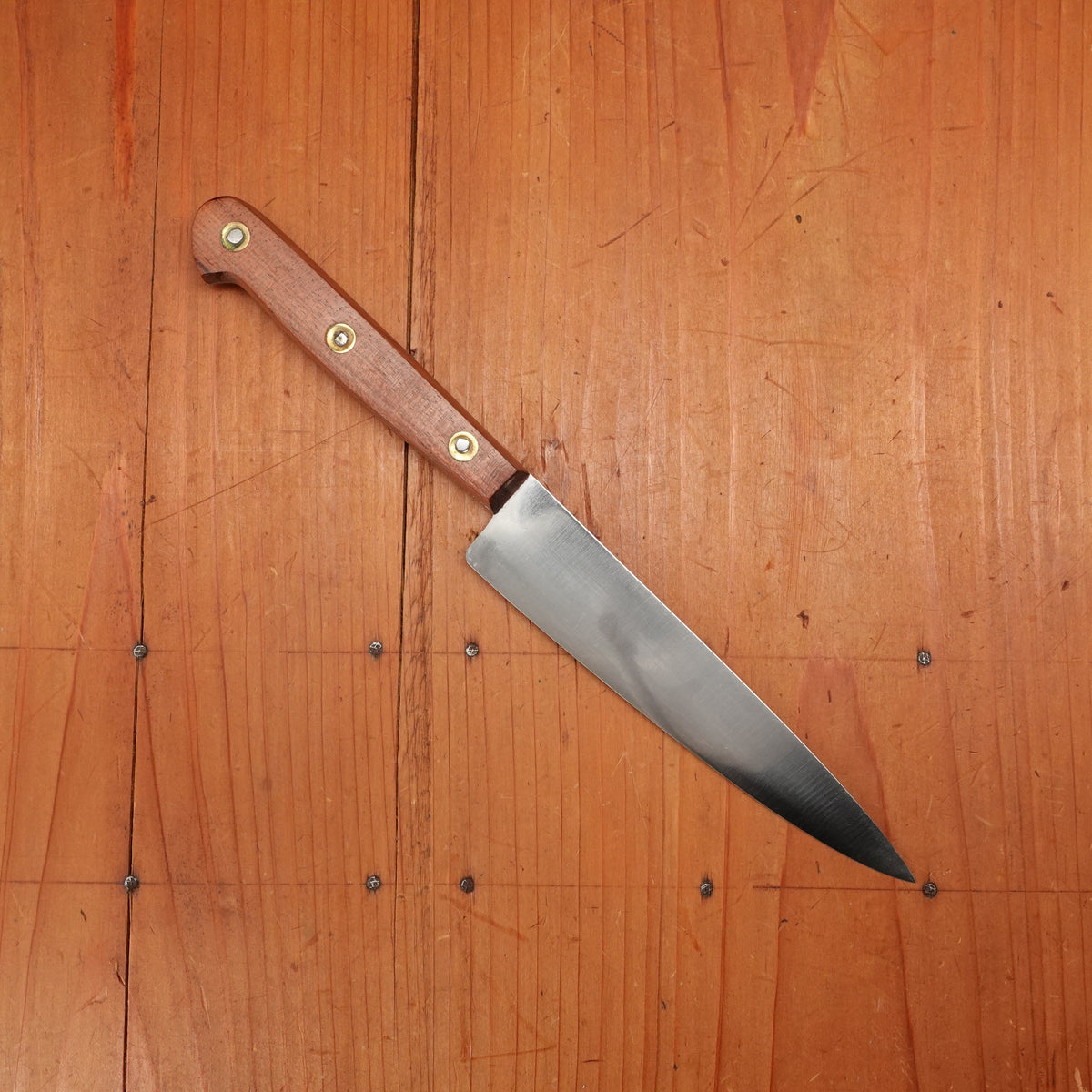
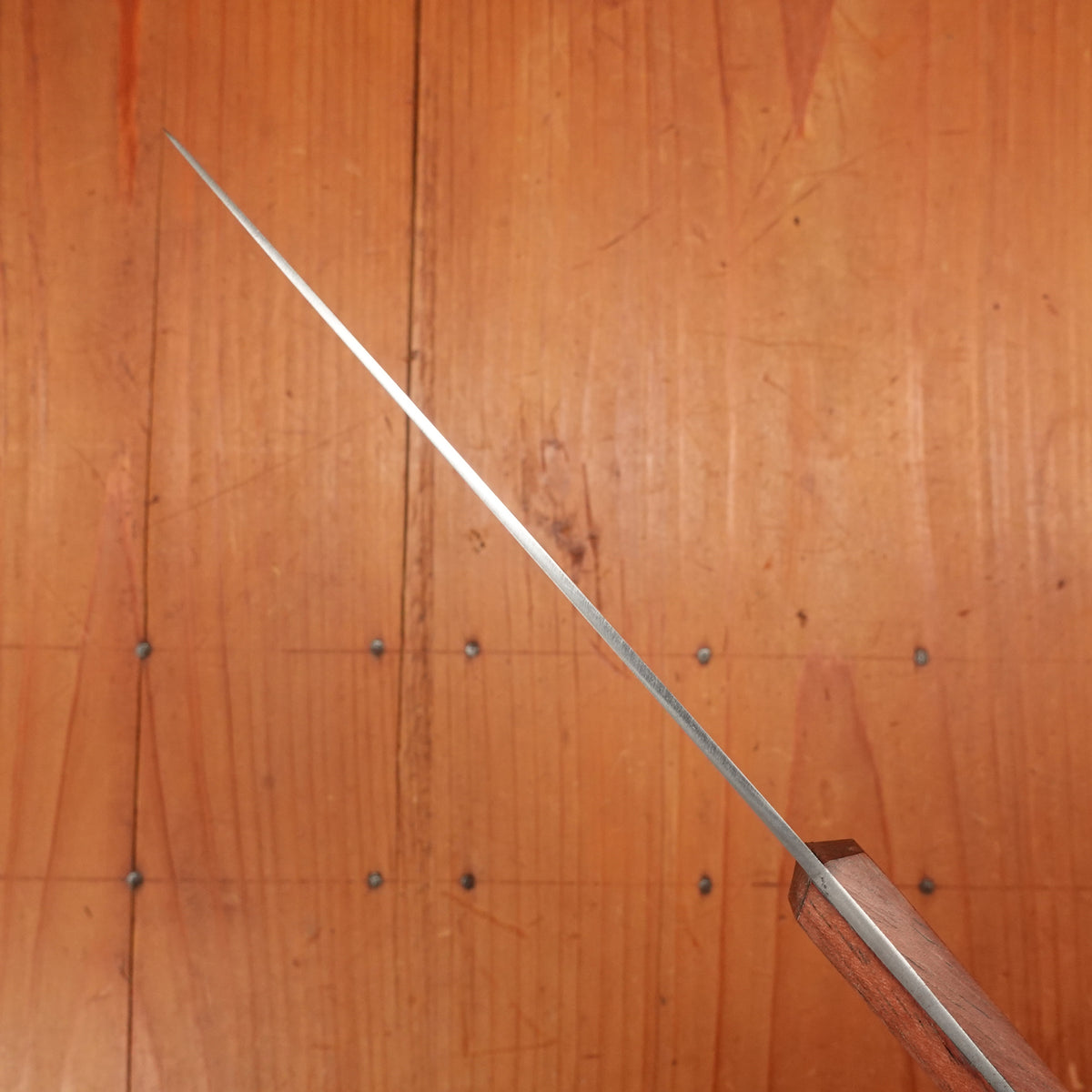
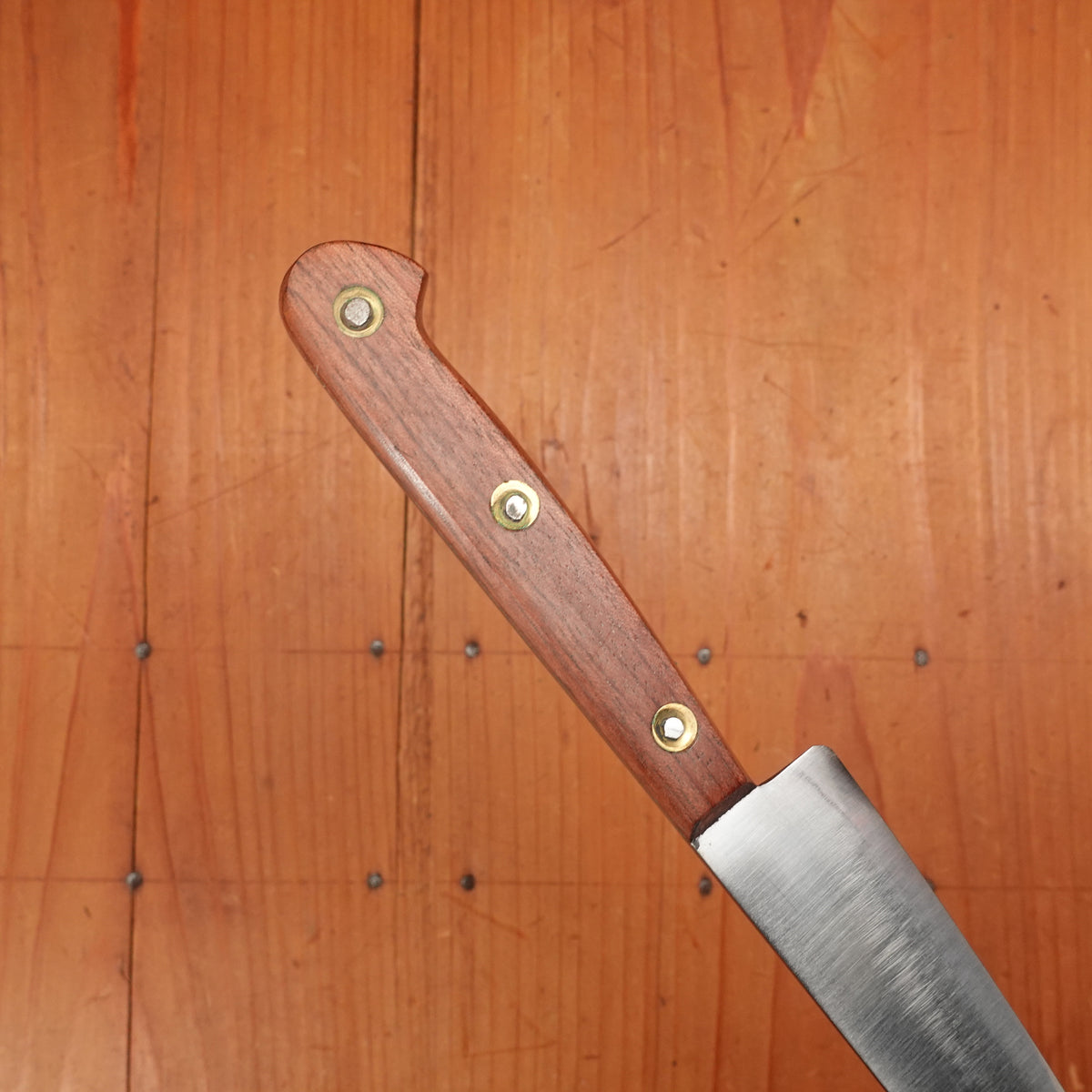
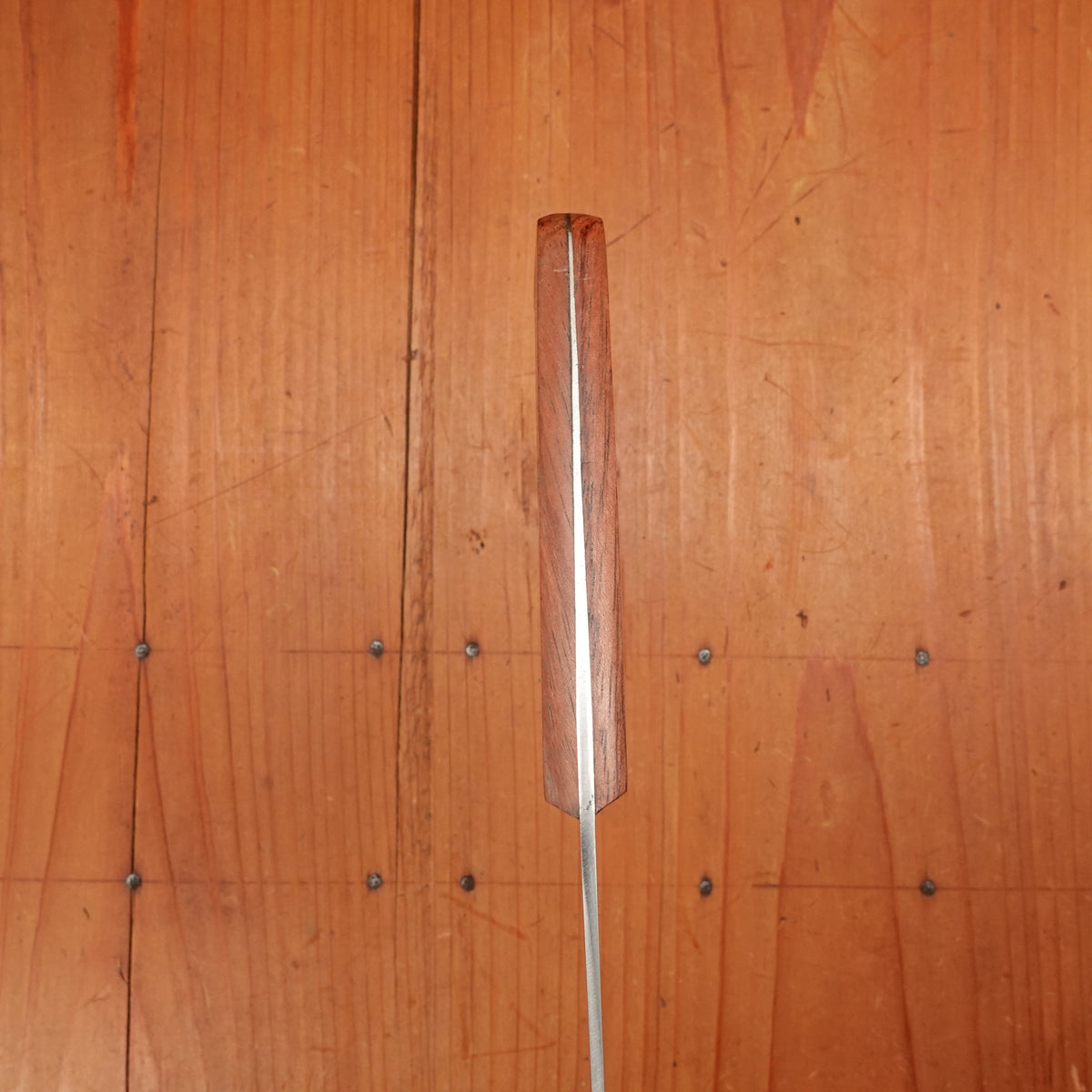
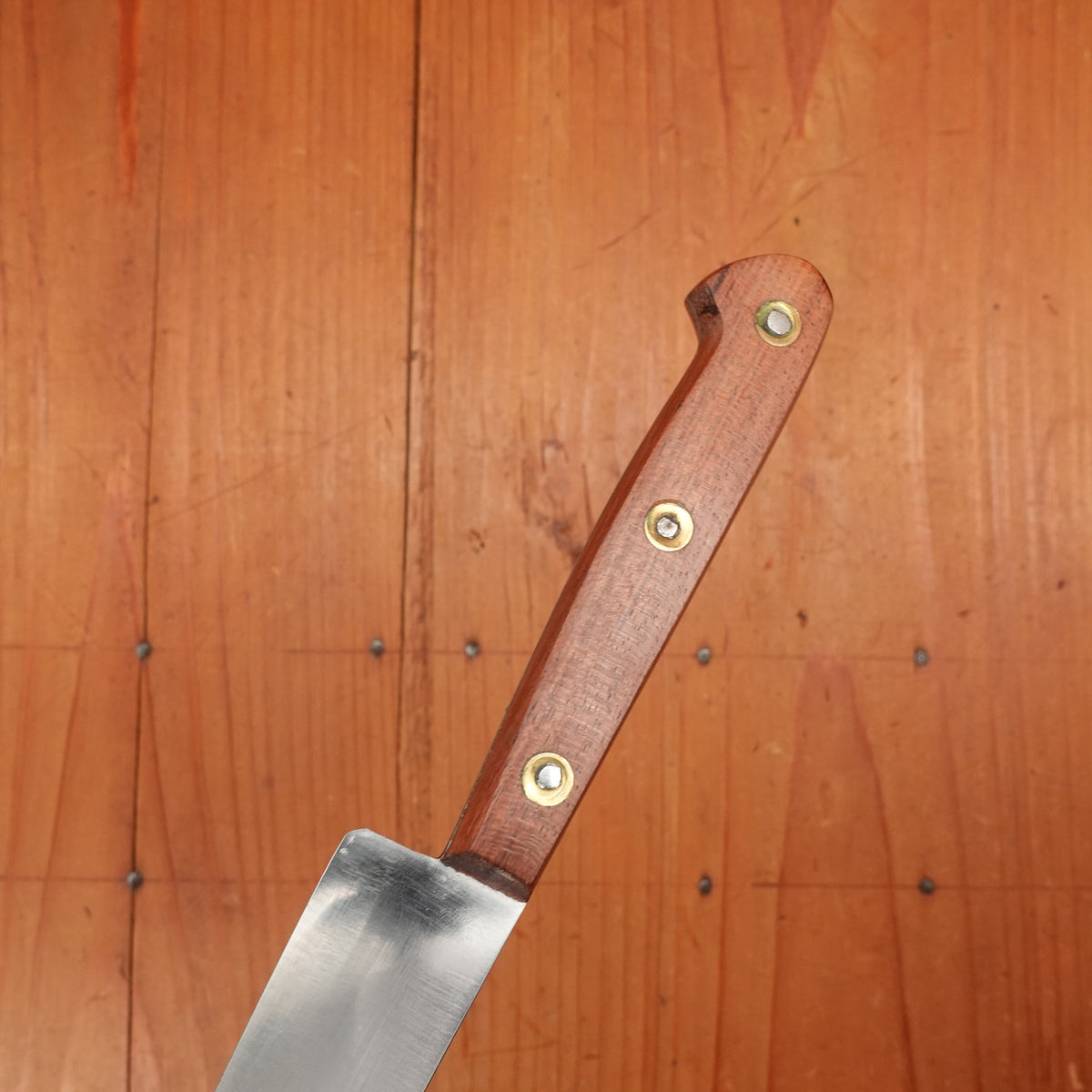
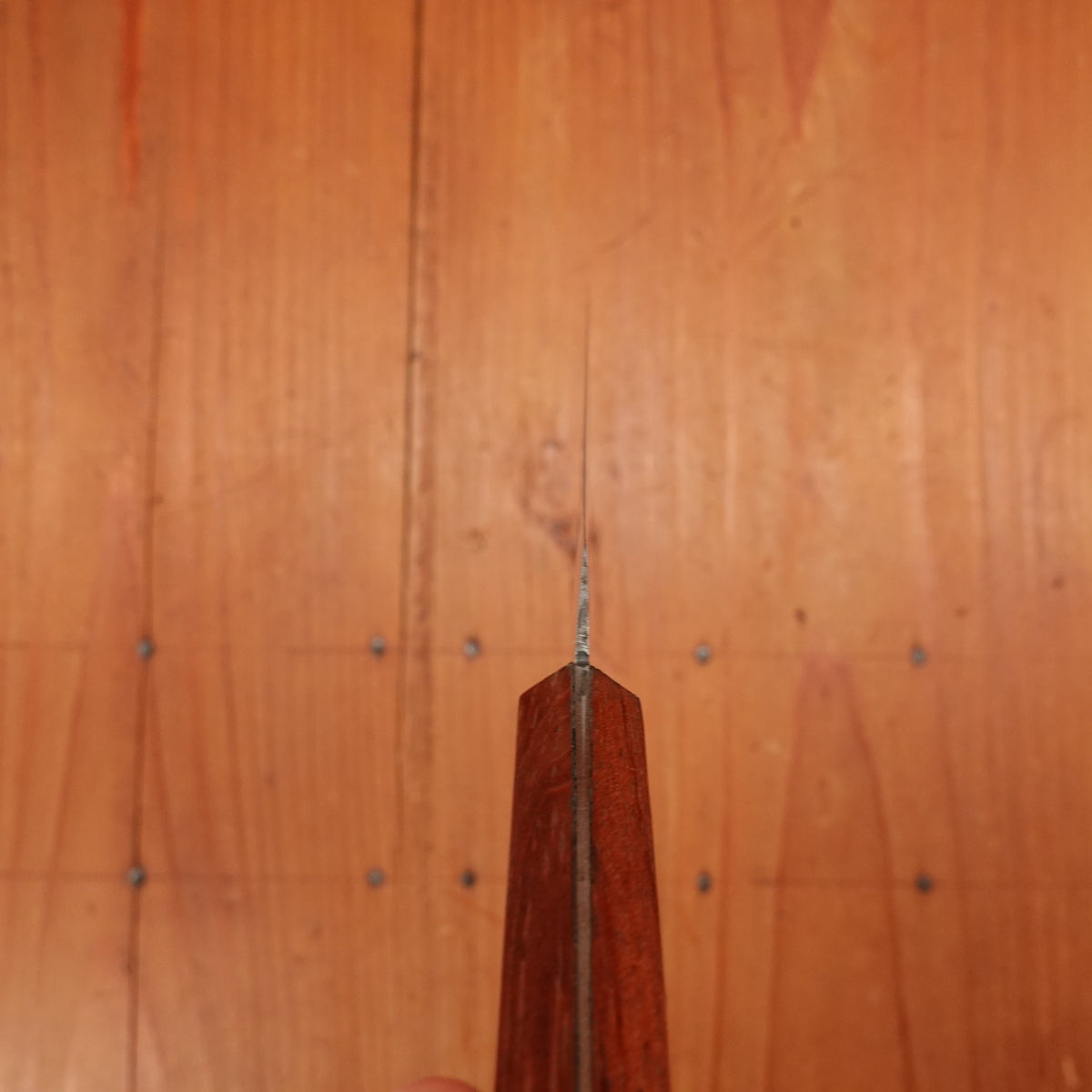
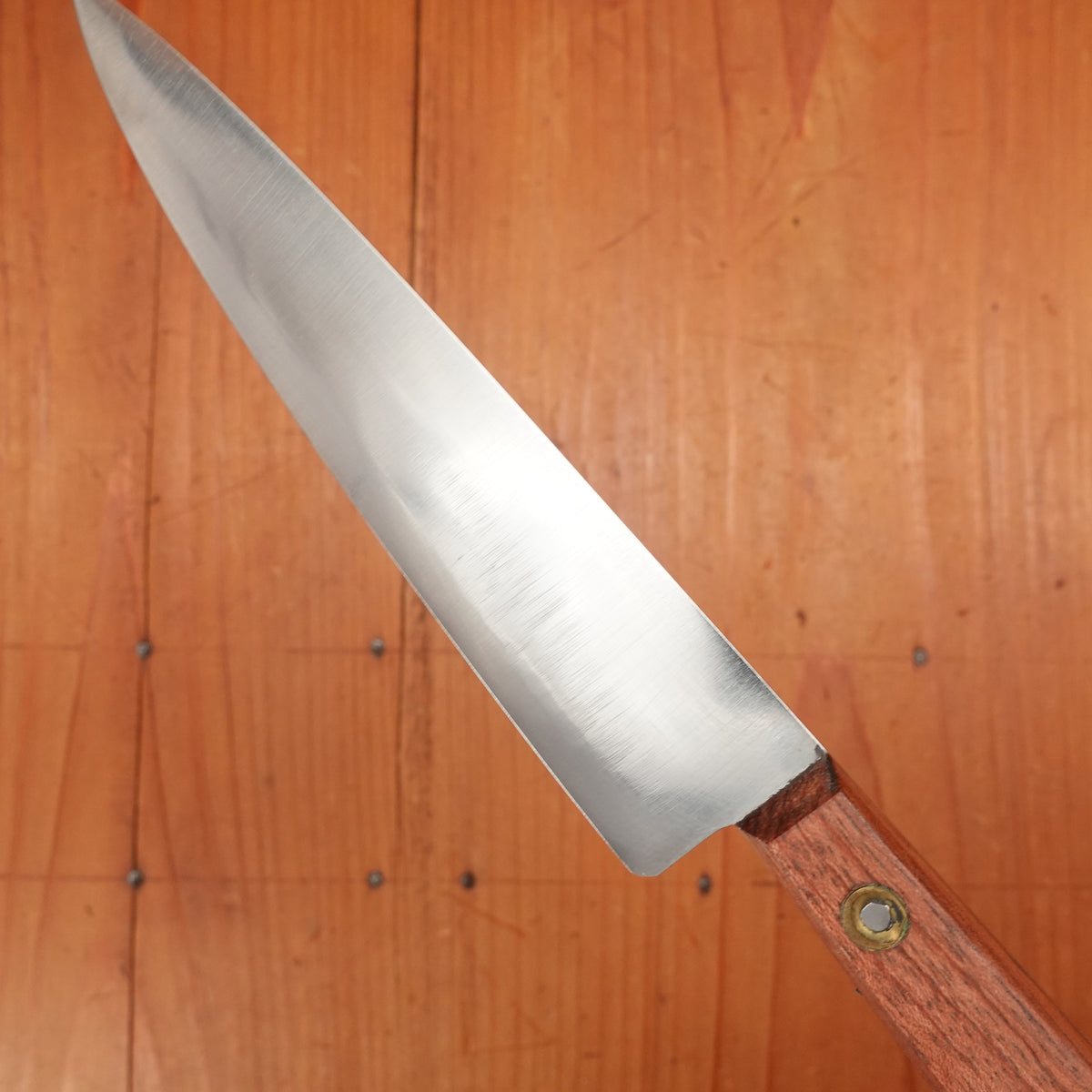








New Old Stock 14cm 5.5" Plate-Semelle Office Knife Hand Forged Carbon 3 Rosette Rosewood 1950-60
-
Regular Price
-
$78.00
-
Sale Price
-
$78.00
-
Regular Price
-
Sale
Sold Out
-
Unit Price
- /per
- Regular Price
- $78.00
- Sale Price
- $78.00
- Regular Price
- Unit Price
- /per
These ‘Plate-Semelle’ or ‘flat plate’ flat forged knives were made in Theirs, France, in the 1950s. These were the working-class knives of their day. They lived for action in the back kitchen, or ‘office’, where game would be processed in large homes. They also served as work knives in more humble homes. They are thin and light, yet stiff and strong, with a good toughness and an excellent sharpenability.
These are handled in rosewood with three brass and steel rosette rivets, the handles are tight and secure and the wood will continue to develop a mellow tone with use and oils. Rosette rivets were largely phased out in the 1950's in Thiers with the adoption of versions of todays tubular cutlery rivets.
Plate-Semelle knives represent the last, large scale commercial application of a very old forging technique. First, a bar of steel was drawn out to form the blade on an old martinet mechanical hammer. The tang (handle area) is next drawn out on the hammer; making for a tapered blade and tang, with a thick area where the two meet at the neck. When forging a large bulge in the steel would remail hat would be hanmered and ground to a small bulge.
The origins of the nearly ubiquitous bolster on western knives lies in this bulge of steel where the blade and tang meet. During the Middle Ages, fine cutlery offered at noble and church banquets were an important mark of wealth and power. In the making of fine cutlery, the bulge in the center of the knife was left thick and intricately ground, in addition to other embellishments to the knife. This feature became emblematic of fine cutlery. It lives on today in the more subdued, less ornate bolsters that characterize western culinary knives and are still signify a knife as being of high quality.
Being handmade, there are slight differences between knives and they may have imperfections; slightly wavy blades, asymmetrical handle scales, etc. They were made to be affordable, hard workers, without a lot of fuss. If you can deal with these imperfections, you will be rewarded with a knife that has a great cutting feel and is truly a piece of history!
New Old Stock, Vintage and New Old Stock knives do not come sharpened. Please request sharpening if desired in the order notes section of the cart page.
Recently Viewed
About Bernal Cutlery
We are a full-service cutlery shop offering sharpening services, Japanese and Western culinary knives, vintage knives, outdoor, pocket and craft knives, cooking tools and accessories. We also offer knife skills and sharpening classes, and more.
We are proud to serve kitchen professionals, knife enthusiasts and home cooks alike. Located in the Mission District of San Francisco, California.
